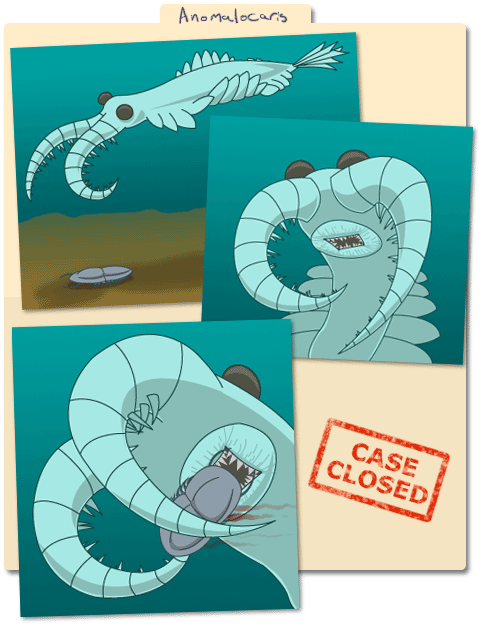This case of mistaken identity involves three central suspects, all fossils discovered in the same Cambrian rocks. Scientists of the 1900s identified them as follows:
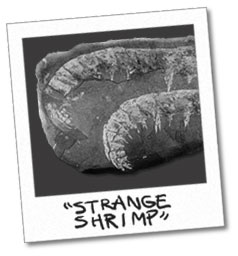 Suspect #1: The Strange Shrimp
Suspect #1: The Strange Shrimp
This fossil resembles a shrimp missing its head and was named Anomalocaris, the strange (anomalo) shrimp (caris).
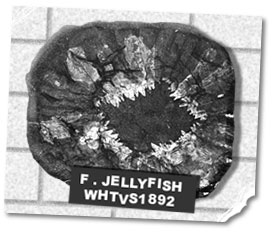
Suspect #2: The Frisbee Jellyfish
This fossil resembles a Frisbee with a hole in the middle, and was hypothesized to be the remains of a very unusual jellyfish
Suspect #3: The Squashed Sponge
A non-descript, blob-like fossil was thought to be a smashed sea cucumber or a squashed sea sponge.
Solving the mystery
Clue #1: Strange Shrimp, AKA…?
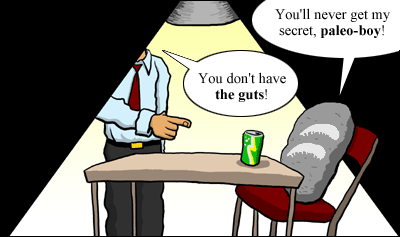 In the 1970s, researchers reexamined the Strange Shrimp and noticed that:
In the 1970s, researchers reexamined the Strange Shrimp and noticed that:
- None of its fossils showed that it had a gut.
- None of its fossils showed that it had jointed legs.
Based on these observations, paleontologists radically revised their hypothesis — perhaps Anomalocaris was actually just one leg of a much larger arthropod.
Clue #2: A Pattern Emerges
As paleontologists studied even more rocks, they kept finding these fossils (the former shrimp, the jellyfish, and the sponge) together in the same slab. Even stranger, the fossils were often positioned in the same way: two “shrimp” in front of a jellyfish, with a squishy blob behind them.
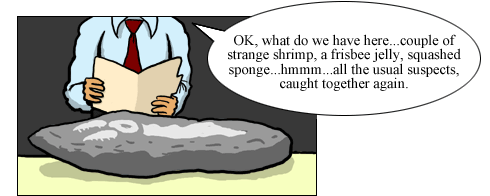
Putting the pieces together
Paleontologists concluded from these data that the shrimp, the jellyfish, and the sponge were all different parts of the same strange animal! This creature — stuck with the name Anomalocaris — had a soft body (the “sponge”) with side flaps for swimming. Its formidable jaws were formed by a set of hard plates arranged in a circle (the “jellyfish”). And it caught prey using its large, spiny mouth appendages (the “shrimp”). Anomalocaris probably went extinct by the end of the Cambrian.
